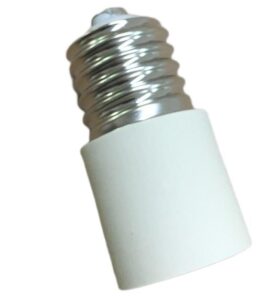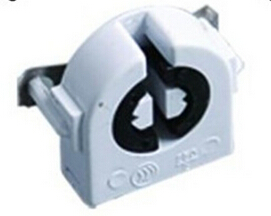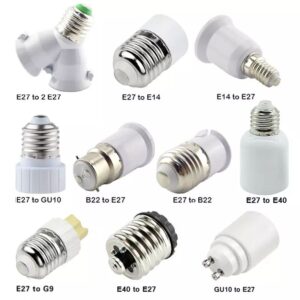Using a 100W bulb in a 60W bulb socket can cause overheating, damage to the socket, a fire hazard, and reduce the life of the bulb. Use the correct wattage.
Using a bulb with a higher wattage than the socket is rated for can cause overheating and electrical problems. This can damage the socket, the bulb, and possibly start a firehttps://www.lightbulbsocket.com/.
You need to know the wattage limitations when you pick out bulbs for your sockets.

Is a 100 watt bulb or 60 watt bulb more resistant?
Resistance in light bulbs is associated with their power rating and material construction. Generally, a 60-watt bulb has higher resistance than a 100-watt bulb because the lower power rating results from a thinner filament. The filament of a 100-watt bulb is thicker, allowing more current to flow through it, resulting in higher energy consumption and lower resistance.
This difference in resistance impacts the light output and heat produced by the bulbs. The 100-watt bulb is brighter, but it also generates more heat, which can be problematic in sockets that aren’t designed to handle such wattages. Therefore, while the 100-watt bulb may seem more powerful, it is less resistant and requires more energy to function, making it unsuitable for low-wattage sockets like a 60W-rated one.
What is the difference between 100W and 60W bulbs?
The primary difference between a 100W and a 60W bulb is their power consumption and brightness. A 100W bulb uses more electricity and produces more light than a 60W bulb. Specifically, the 100W bulb typically outputs around 1600 lumens, while a 60W bulb produces about 800 lumens.
In addition to light output, the heat generated by the bulbs is another critical distinction. A 100W bulb generates significantly more heat, which can cause overheating in fixtures or sockets that are not rated for such high wattage. This excessive heat can damage the fixture, melt wiring, or even pose a fire risk if the socket is only designed for 60W bulbs.

What happens if you use a wrong wattage bulb?
Using a bulb with a higher wattage than recommended for the socket can cause several issues. Overheating is the most immediate concern. When the socket is rated for lower wattage, the excessive heat produced by a higher wattage bulb can cause the socket to overheat, potentially leading to electrical shorts, melted insulation, and even fires.
Furthermore, using the wrong wattage can reduce the lifespan of the bulb. The excessive heat stresses the bulb’s components, causing it to fail prematurely. In some cases, you may also experience flickering or inconsistent light output as the fixture struggles to handle the increased power load. To avoid these risks, always use bulbs that match or are lower than the socket’s recommended wattage rating.
Can I use a 100W LED in a 40W socket?
Technically, a 100W-equivalent LED bulb can be used in a 40W socket because LED bulbs are more energy-efficient. A 100W-equivalent LED typically only consumes around 15 to 20 watts of power, meaning it falls well below the socket’s maximum capacity. This energy efficiency is one of the advantages of LED bulbs—they provide the same brightness as a traditional bulb but consume less energy and generate less heat.
However, it’s essential to ensure that the physical size of the LED bulb fits within the socket’s housing, especially in enclosed fixtures. While the wattage won’t be an issue, the bulb could overheat if not properly ventilated, reducing its lifespan.
Can I put a 100W bulb in a 75W socket?
Placing a 100W incandescent bulb in a socket rated for 75W is not recommended. The extra 25 watts may seem negligible, but it generates additional heat that the socket and wiring are not designed to handle. Over time, this heat can cause the socket to degrade, melt insulation, and increase the risk of fire.
Sockets have a wattage rating for a reason—it ensures the fixture can safely handle the heat output and electrical load. Exceeding this limit not only damages the socket but also puts your entire electrical system at risk. Therefore, always stick to the manufacturer’s wattage recommendations to avoid any potential hazards.

What happens if wattage is too high?
When the wattage of a bulb exceeds the rating of the socket, the excessive heat generated can have several detrimental effects. The socket itself can become overheated, leading to damage such as melted wiring or electrical shorts. This not only damages the socket but can also create a fire hazard if the heat is not dissipated properly.
Furthermore, the bulb may fail prematurely because it operates under conditions it was not designed for. In extreme cases, the fixture could emit a burning smell, or the protective insulation around the wiring may melt, increasing the risk of an electrical fire.
Therefore, ensuring the wattage of your bulbs does not exceed the rating of the socket is crucial for both safety and longevity.
You should always match the bulb wattage to the light socket so you don’t overheat it and create a fire hazard.













